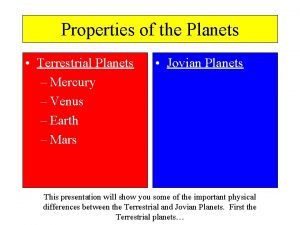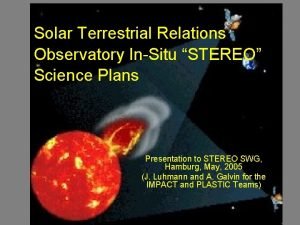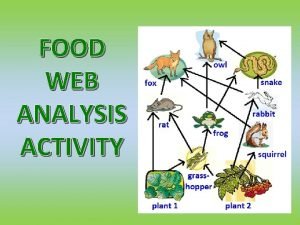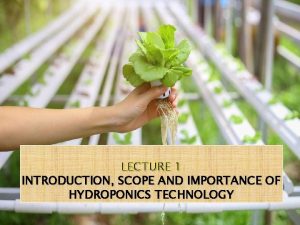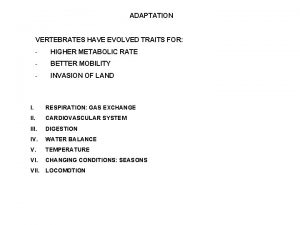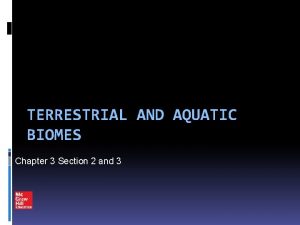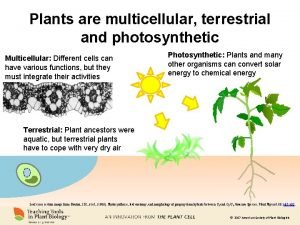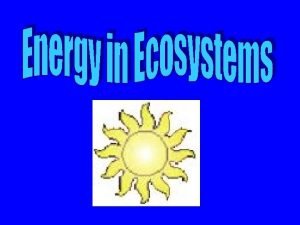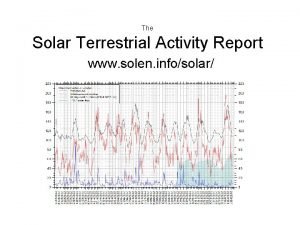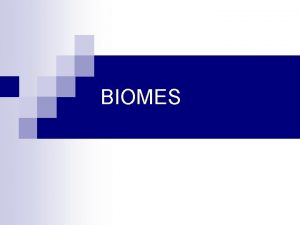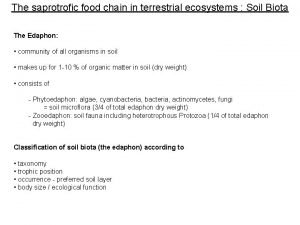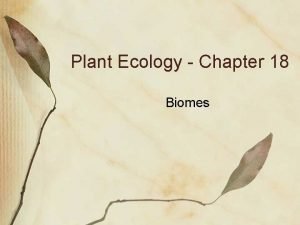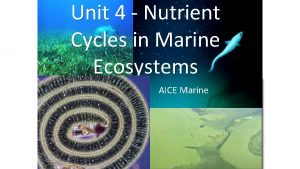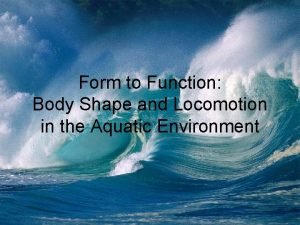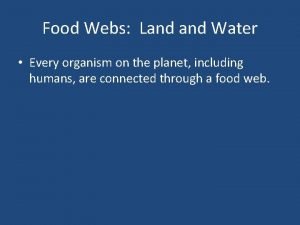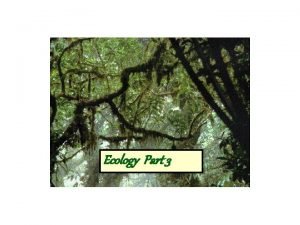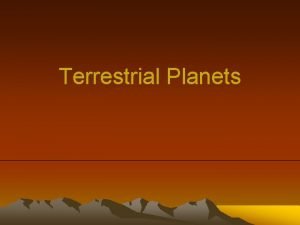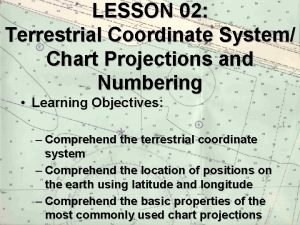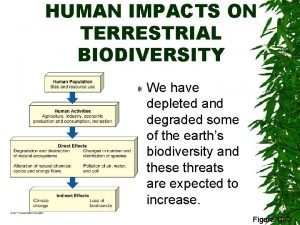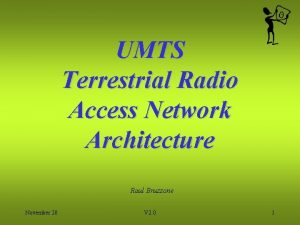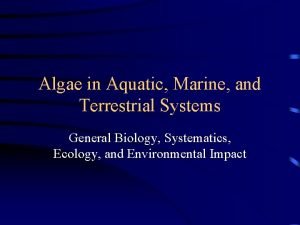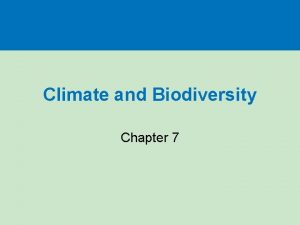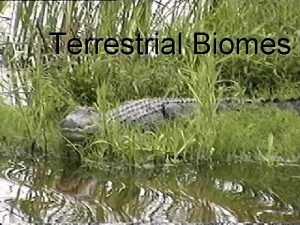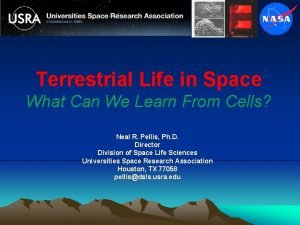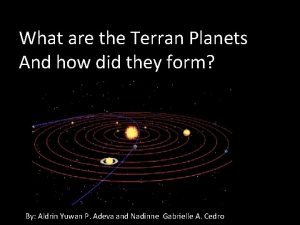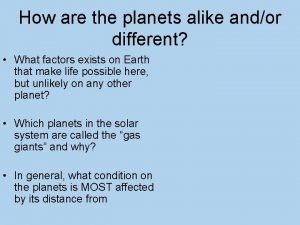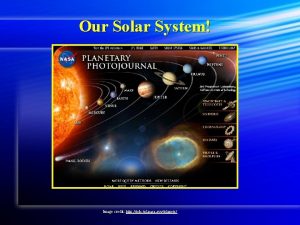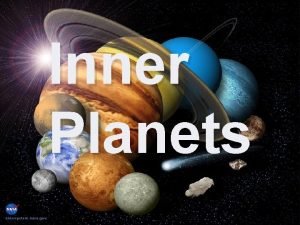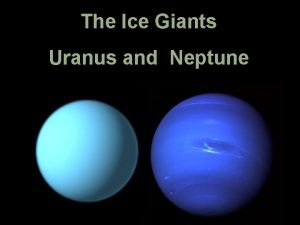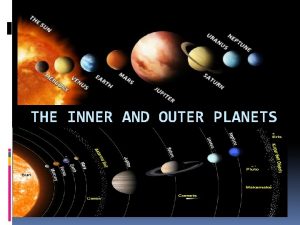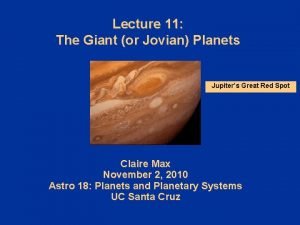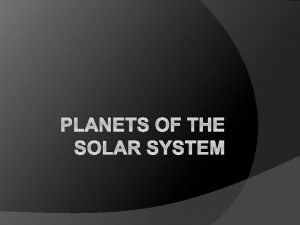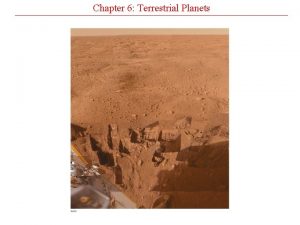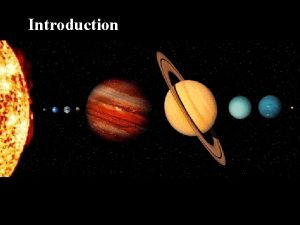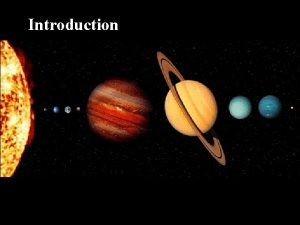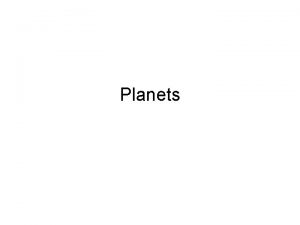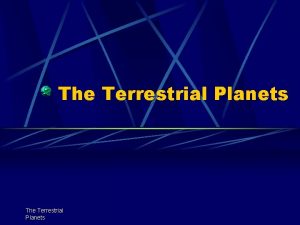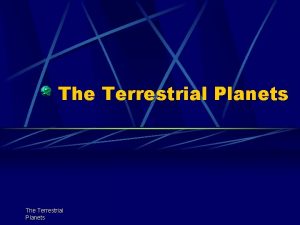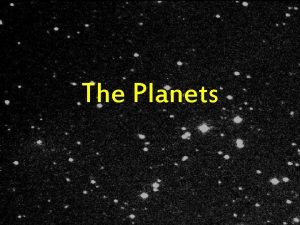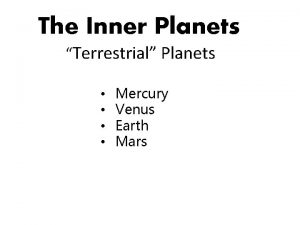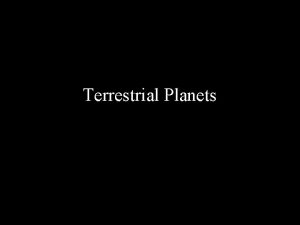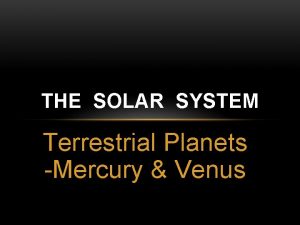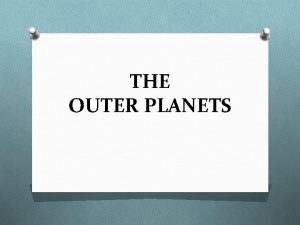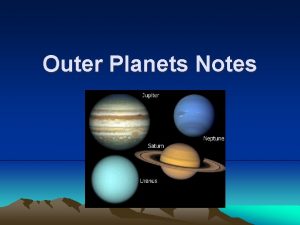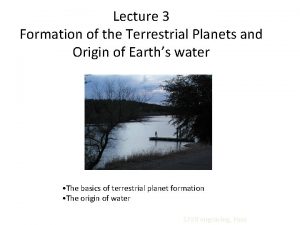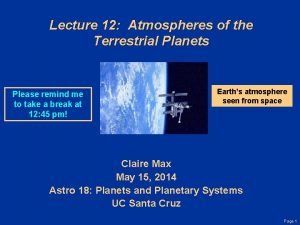Lecture IV Terrestrial Planets 1 2 3 4


















































- Slides: 50

Lecture IV: Terrestrial Planets 1. 2. 3. 4. From Lecture III: Atmospheres Earth as a planet: interior & tectonics. Dynamics of the mantle Modeling terrestrial planets

Observations for Reflected Light • Sudarsky Planet types – I : Ammonia Clouds – II : Water Clouds – III : Clear – IV : Alkali Metal – V : Silicate Clouds • Predicted Albedos: – IV : 0. 03 – V : 0. 50 Picture of class IV planet generated using Celestia Software Sudarsky et al. 2000

Lunar Transit of Earth • Compare the albedo of the Moon to the Earth’s features, e. g. , the Sahara desert. NASA EPOXI spacecraft (2008)

HD 209458 b: Albedos New upper limit on Ag (Rowe et al. 2008) Rowe et al. (2006)

Models Constraints Different atmospheres Equilibrium Temperature blackbody model Spitzer Limit best fit 2004 1 sigma limit – or ~2005 3 sigma limit Rowe et al. 2006 Rowe et al. (in prep)

Seager & Sasselov 2000 The Close-in Extrasolar Giant Planets • Type and size of condensate is important • Possibly large reflected light in the optical • Thermal emission in the infrared

Scattered Light Need to consider: • phase function • multiple scattering

Scattering Phase Functions and Polar Plots Mg. Si. O 3 (solid), Al 2 O 3 (dashed), and Fe(s) Forward throwing & “glory” Seager, Whitney, & Sasselov 2000

MOST at a glance Mission q Microvariability and Oscillations of STars / Microvariabilité et Oscillations STellaire q First space satellite dedicated to stellar seismology q Small optical telescope & ultraprecise photometer q goal: ~few ppm = few micromag Canadian Space Agency (CSA)

MOST at a glance Orbit q circular polar orbit q altitude h = 820 km q period P = 101 min q inclination i = 98. 6º q Sun-synchronous q stays over terminator q CVZ ~ 54° wide q -18º < Decl. < +36º q stars visible for up to 8 wks q Ground station network q Toronto, Vancouver, Vienna CVZ = Continuous Viewing Zone MOST vector l a m r o n orbit to Su n

• Relative depths – transit: 2% – eclipse: 0. 005% • Duration – 3 hours • Phase changes of planet Relative Flux Lightcurve Model for HD 209458 b Eclipse Transit Phase

Lecture IV: Terrestrial Planets 1. Earth as a planet: interior & tectonics. 2. Dynamics of the mantle 3. Modeling terrestrial planets

Earth’s interior PREM = Preliminary Reference Earth Model

Earth as a planet - tectonics

Earth as a planet - tectonics

Evidence from seismic tomography for the subduction of the plate under Japan. Variations in shear-wave velocity: dv. S/v. S Kustowski et al. (2006) Earth - plate collision & subduction

Earth - the Core-Mantle Boundary

Labrosse & Sotin (2002) Earth mantle convection simulation

Earth interior - mantle plumes

Earth interior - cooling

Super-Earths

Super-Earths: planets in the mass range of ~1 to 10 ME 1. Mass range is now somewhat arbitrary • Upper range corresponds approx to a core that can accrete H 2 gas from the disk. 2. Two generic families - depending on H 2 O content. 3. No such planets in our Solar System. (Discussed at Nantes Workshop - June 16 -18, 2008)

Interiors of Super-Earths Formation and survival of large terrestrial planets: All evidence is that they should be around: Ida & Lin (2004)

The “Tree of super-Earths” Super-Earths Terrestrial Planets / Dry, Rocky Planets Fe -rich mantle ? H 2 O -rich mantle Ocean Planets / Aqua Planets Mini-Neptunes ? ? ? ?

Super-Earth Model Input: M, Psurf, Tsurf, guess R, gsurf, composition Output: R, ρ(r), P(r), g(r), m(r), phase transitions, D, . . .

Interior Models: the Mass Dependence Zero-temperature spheres Zapolsky & Salpeter (1969); Stevenson (1982); Fortney et al. (2007); Seager et al. (2007) (GJ 436 b: Gillon et al. 2007)

Valencia, Sasselov, O’Connell (2006) Interior Structure of Super-Earths

Interior Structure: Radius & Composition Valencia, Sasselov, O’Connell (2007)

Phase Diagram of H 2 O

Super-Earths “Confusion region” Mass range: ~1 - 10 Earth mass

‘Toblerone’ Diagram Δ R± R M±ΔM Valencia et al. 2007 b A tool to infer which compositions fit M and R with uncertainties

Degeneracy is important d. R P . 6 0 = e F i/ S Si/H O = 2 0. 23

Valencia, Sasselov, O’Connell (2007) Models vs. Kepler observations

Earth is a ‘perovskite’ planet (Fe, Mg) Si. O 3 - enstatite - perovskite (Pv) 40% of Earth is Pv ! - post-perovskite (p. Pv) Pv p. Pv at ~125 GPa Tiny amount of post-perovskite at the CMB (the thin D” region) Super-Earths are ‘post-perovskite’ planets.

Super-Earths as post-Perovskite planets T-P curves for 7. 5 ME models < Note: all mantles have pressures that reach 1000 GPa (Valencia, Sasselov, O’Connell 2007)

Super-Earths: very high pressures

Post-Perovskite

Super-Earths as post-Perovskite planets p. Pv (Oganov 2006) Pv Does post-perovskite incorporate more Fe ? Is there a post-post perovskite, e. g. like GGG ? Are there analogs to the Pv lower mantle ‘oxygen pump’ ?

Post-Perovskite ? Expectation that all (Si, Al, Mg, Fe) oxides will collapse to an O 12 perovskite structure, like Gd 3 Ga 5 O 12 (GGG) does at >120 GPa. < above 150 GPa becomes less compressible than diamond ! (Mashimo, Nellis, et al. 2006)

New high-P experiments needed (2008) Z-Beamlet target chamber of 10 TWcm-2 setup at SNL (J. Remo, S. Jacobsen, M. Petaev, DDS)

(Remo et al. 2008) T-P: Experimental Results

We measure 10 -50 x Fe, Cr, Al -enrichments of the silicate melts (Rightley et al. 1996) ØStrong mixing occurs due to a Richtmeyer-Meshkov instability behind the shock - is it scalable & relevant to giant impacts ?

Valencia, Sasselov, O’Connell (2006) Interiors of Super-Earths Earth-like Ocean Planet

Interiors of Super-Earths Mass-Radius relations for 11 different mineral compositions (Earth-like): Valencia, O’Connell, Sasselov (2005) 1 ME 2 ME 5 ME 10 ME

Theoretical Error Budget: Planet Radius Errors: Ø Ø New high-P phases, e. g. ice-XI: EOS extrapolations (V vs. BM): Iron core alloys (Fe vs. Fe. S): Viscosity, f(T ) vs. const. : -0. 4% +0. 9% -0. 8% +0. 2% Ø Overall the uncertainties are below 2% (at least, that’s what is known now)

20, 000 7. 5 ME 12, 000 4, 000 2, 000 6, 000 RADIUS (km) 10, 000 Valencia, Sasselov, O’Connell (2006) DENSITY (kg/m 3) Interior Structure of GJ 876 d

Valencia, Sasselov, O’Connell (2006) Interior Structure of GJ 876 d

What would we look for and could we measure it ? Could we measure the difference? - YES: We need at least 5% in Radius, and at least 10% in Mass. Work on tables for use with Kepler underway - masses 0. 4 to 15 ME

Degeneracy - solution: samples s m diu a r ax H 2 O s diu a r in m All you need to constrain planet formation models! - sample with radii to 5% and masses to 10%.

Valencia, Sasselov, O’Connell (2007) Dry vs. Ocean super-Earths
 Why are jovian planets bigger than terrestrial
Why are jovian planets bigger than terrestrial Rocky planet surface
Rocky planet surface Characteristic of mars
Characteristic of mars Inner terrestrial planets
Inner terrestrial planets Terrestrial planet
Terrestrial planet Outer planets
Outer planets Solar system jeopardy
Solar system jeopardy The inner solar system by leslie
The inner solar system by leslie 01:640:244 lecture notes - lecture 15: plat, idah, farad
01:640:244 lecture notes - lecture 15: plat, idah, farad Solar terrestrial relations observatory
Solar terrestrial relations observatory Freshwater food web
Freshwater food web Terrestrial only
Terrestrial only Scope of hydroponics
Scope of hydroponics Respiration in terrestrial animals
Respiration in terrestrial animals Biomes summary chart
Biomes summary chart Chapter 3 section 2 terrestrial biomes
Chapter 3 section 2 terrestrial biomes Photosynthetic multicellular and terrestrial
Photosynthetic multicellular and terrestrial World animal health information system
World animal health information system Gymnosperms
Gymnosperms Two or more overlapping food chains
Two or more overlapping food chains Infosolar
Infosolar Is eubacteria terrestrial or aquatic
Is eubacteria terrestrial or aquatic Terrestrial
Terrestrial Differences between aquatic and terrestrial ecosystems
Differences between aquatic and terrestrial ecosystems What is terrestrial navigation?
What is terrestrial navigation? Taiga climatograph
Taiga climatograph A terrestrial food web
A terrestrial food web Terrestrial habitat
Terrestrial habitat Land food webs
Land food webs Terrestrial food chain that includes 4 trophic levels
Terrestrial food chain that includes 4 trophic levels My very excited mother just
My very excited mother just Diameter of inner planets
Diameter of inner planets Terrestrial food production systems
Terrestrial food production systems Terrestrial soil
Terrestrial soil Gnomonic chart
Gnomonic chart Impacts of wildlife trade on terrestrial biodiversity
Impacts of wildlife trade on terrestrial biodiversity Wcdma network architecture
Wcdma network architecture Are protists terrestrial or aquatic
Are protists terrestrial or aquatic Human impact on terrestrial ecosystems
Human impact on terrestrial ecosystems Terrestrial biomes characteristics
Terrestrial biomes characteristics Terrestrial life
Terrestrial life Terran planets
Terran planets Planet andor
Planet andor Circumbinary planets
Circumbinary planets Http://pds.jpl.nasa.gov/planets/
Http://pds.jpl.nasa.gov/planets/ Inner planets
Inner planets Planets. lesson 1
Planets. lesson 1 Neptune up close
Neptune up close What separates the inner and outer planets
What separates the inner and outer planets Why do jovian planets have rings
Why do jovian planets have rings Planets name
Planets name




